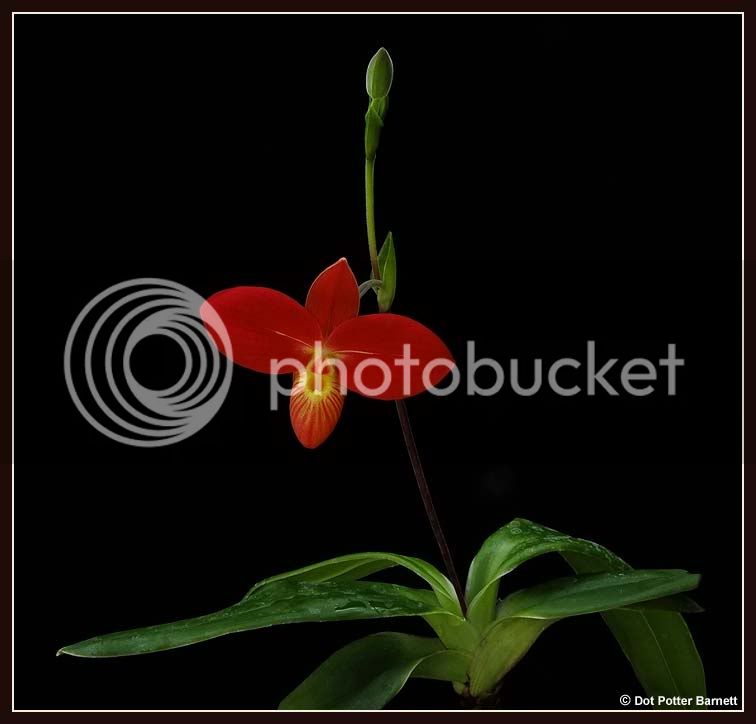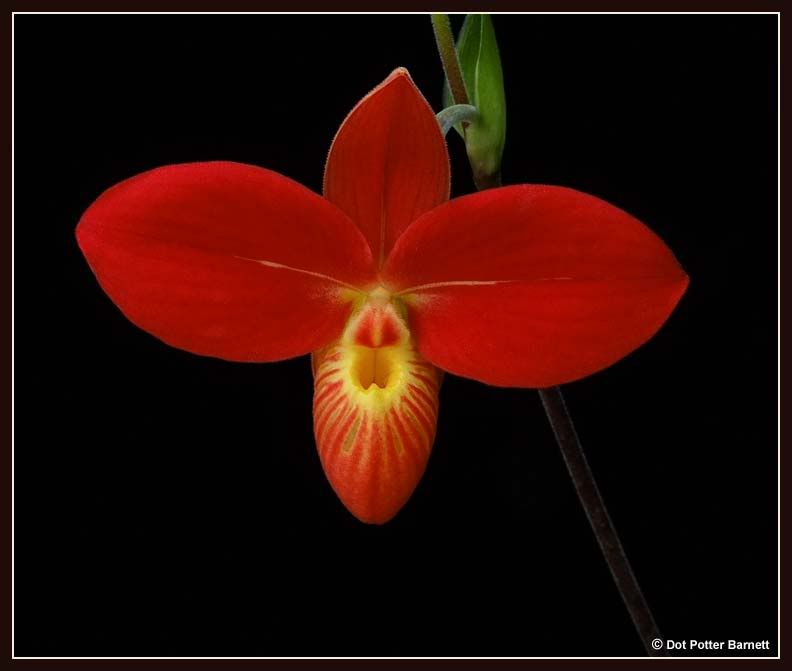Years ago, when besseae was still "new", I was at the Ann Arbor, Michigan judging centre, sitting next to Dr. Dick Clements. He had the most spectacular, red besseaes. Back then, 1989, all besseaes in collections were wild collected plants. Dr. Clements' plant had been turned down for scoring consideration because it had very slight "lines" like this on the petals. Although, they were shorter and not as prominent, they were enough for the judges to disqualify the plant from further consideration. Dr. Clements was actually quite disappointed because the flowers were otherwise absolutely spectacular and the marks were so very tiny. So, even plants straight from the jungle did this. It seems to be part of the "besseae condition".
Dr. Clements did his reasearch ahead of each judging (even going so far as printing out a copy of past awards and submitting these research documents with his plants at the judging sessions) and he knew that the besseaes he'd presented for judging were better than anything else that had been awarded to that date. Before he knew the reason for the plants being passed over, he asked the judges afterwards why they didn't point the plants....even for an HCC? He was told the lines in the petals (which you had to strain hard to see), were "fatal flaws". Dr. Clements was really rocked by this because according to his research ahead of time, these plants should've received point scores over 90 points, which of course, is FCC territory. He told me that he really wanted to win an FCC before he died. But, he felt he'd become a bit "persona non-grata" at that judging centre; so, he didn't attend the judgings for some months after that incident. A short while later, he wrote me all excited that he'd been back to the judging again and he won 2 FCC's! One was for a Paph. micranthum and the other was for a Paph. armeniacum; both "all covered in moss on top". He was ecstatic! Unfortunately, he passed away while gardening in his back yard before he got to see his FCC's published in the AOS AQ.


















